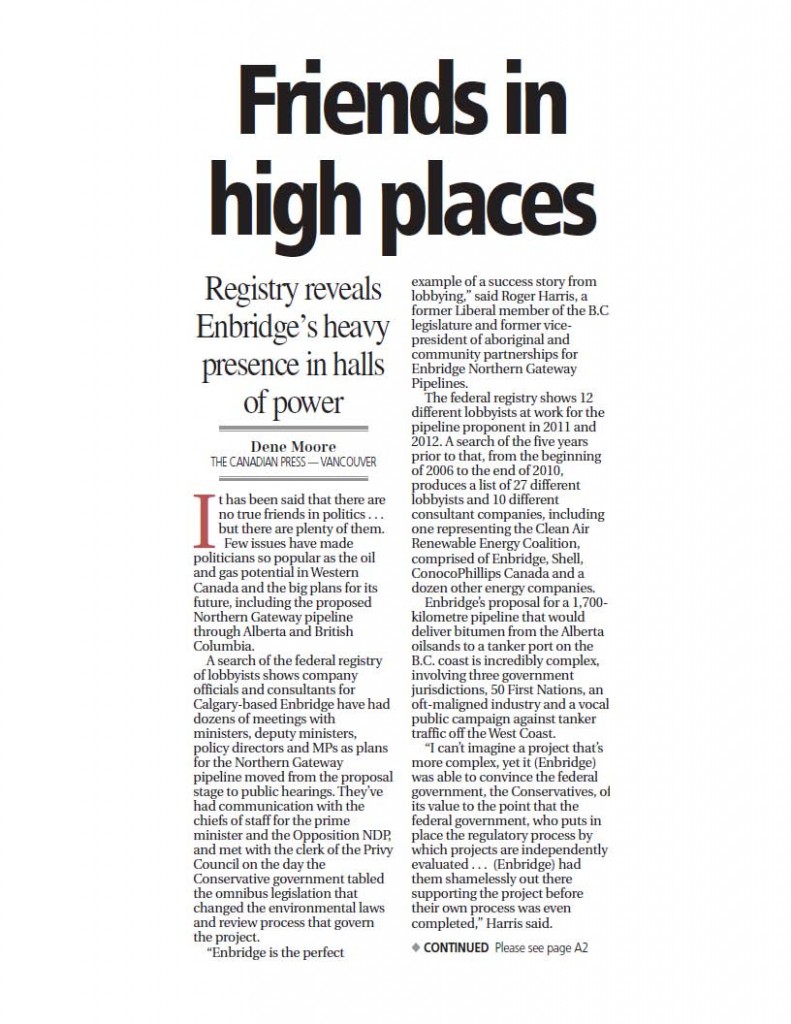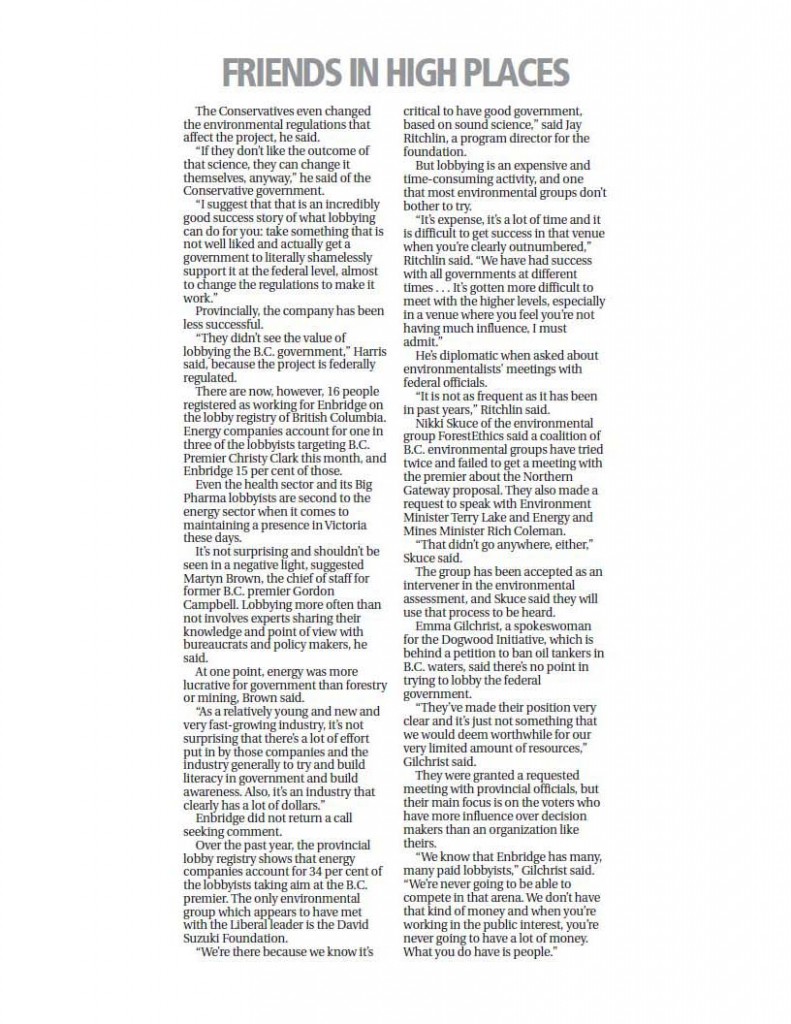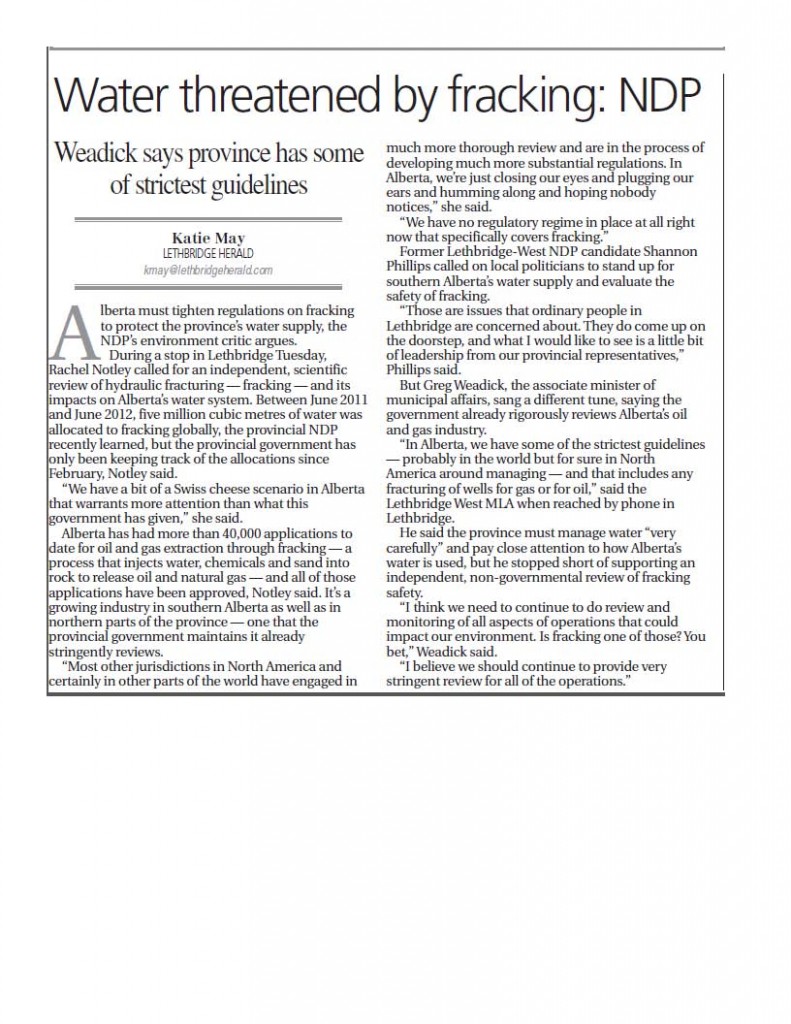Edmonton Journal August 30, 2012
EDMONTON – Premier Alison Redford out-raised and outspent rival party leaders by a wide margin during the 2012 spring election, financial documents filed with Elections Alberta show.
The documents, posted online Thursday, show Redford raised nearly $192,000 and spent roughly $154,000 to get elected in her riding of Calgary-Elbow, more than all other party leaders combined.
Wildrose Leader Danielle Smith raised just over $57,000 and spent $55,000, while Liberal Leader Raj Sherman raised about $28,500 and spent just over $48,000, making up the difference from savings.
NDP Leader Brian Mason did no fundraising and paid roughly $34,500 for his campaign, a bill paid with transfers from the party.
Bill Moore-Kilgannon of Public Interest Alberta says the extra support for Redford is evidence that Alberta’s campaign finance rules need to be reformed.
“We need better campaign finance rules that actually limit contributors to the people who can vote, rather than organizations like unions and corporations trying to curry favour with government,” Moore-Kilgannon said.
“Some other provinces don’t allow corporations or unions to contribute. Federally they’re not able to contribute, but here in Alberta we see a huge amount of money coming from the corporate sector trying to influence the most senior government officials in the PC party.”
The records reveal the names of people who donated more than $375 to each candidate. Redford’s list of donors includes corporate heavyweights like EnCana Corp., Cenovus Energy, Northwest Upgrading, Telus, and a numbered company tied to AgeCare, a private eldercare company that developed the aging-in-place model the province has adopted.
The disclosures also show Allaudin Merali, the former health executive embroiled in a scandal over his lavish spending, donated $500 to Health Minister Fred Horne’s campaign. Merali recently left his position at Alberta Health Services after revelations that he racked up nearly $350,000 in expenses during his time with the former Capital Health Authority from 2005 to 2008.
Merali’s $500 was among more than $50,000 Horne raised, mostly from individuals rather than companies. He spent more than $86,000 to win what had been expected to be a very tight Edmonton-Rutherford riding.
Energy Minister Ken Hughes raised just over $55,000 for his campaign in Calgary-West. His contributors included Maxim Power Corp., which is building a new coal plant in Alberta, along with several other energy companies and Cathy Roozen, who succeeded Hughes as Alberta Health Services board chair.
Environment and Sustainable Resource Development Minister Diana McQueen raised almost $24,000 for her campaign in Drayton Valley-Devon. Her contributors included a number of energy companies, including $1,000 from Encana, and $500 each from Atco, Cenovus and Marathon Oil. Two forestry companies also donated money.
Atco, Encana, Telus, CN and Cameron Development Corp. were among contributors that helped Finance Minister Doug Horner raise close to $85,000 in donations. Deputy premier Thomas Lukaszuk collected donations totalling more than $41,000, including $2,500 from a pair of unions.


